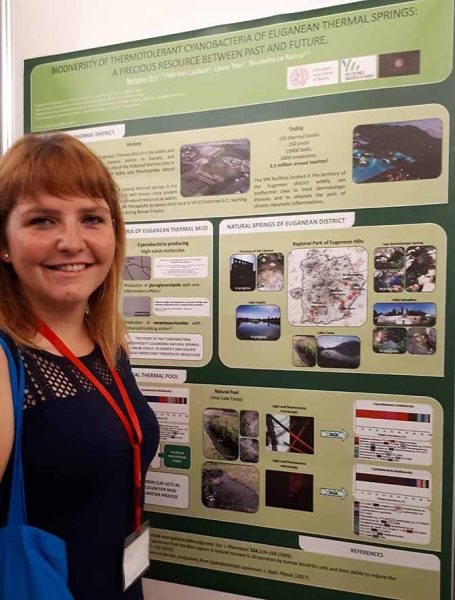The presentation of the study on the biodiversity of thermal springs

The work on the DNA analysis of samples of cyanobacteria conducted this summer by the Pietro d’Abano Thermal Studies Center that AbanoRitz constantly supports in the research on thermal medicine, was presented at the International Convention on extremophile organisms that was held in Ischia by the 17 to 20 September. The cyanobacteria have been taken from some natural thermal springs of the territory to have the picture of natural biodiversity in relation to that of the mud tanks.
An important research
The great aspiration and mission is to bring the identification of our rich spa area to the Italian equivalent of Yellowstone, the national park that is located in the United States, the oldest in the world. In this context, it would also contribute to the reinvigoration of the candidature of the Euganean Hills to the UNESCO Biosphere Reserve, even if this still remains a complex subject that requires awareness, passion and a great deal of work.
Extremophiles 2018 bears the name of these organisms that live in prohibitive environmental conditions. Some of these beings resist high pressures and temperatures and in total absence of light, others even in the vacuum of space on the outer surface of the ISS space station.
Among these extraordinary organisms there are also cyanobacteria, which thrive in the natural thermal springs and in our mud tanks. As already mentioned, for about a year one of the research projects of the Study Center, in collaboration with the University of Padua, has set itself the goal of understanding its origin and diffusion in the territory, studying in addition to the sludge, the several sources still present in the Municipalities of the Hills.
The preliminary data presented at the Ischia congress were welcomed with interest and many compliments by the international scientific community. At the moment the results are not yet disclosed but pending publication, the Scientific Director of the Pietro D’Abano Thermal Studies Center Fabrizio Caldara gave us an abstract of the work done.
BIODIVERSITY OF THERMOTOLERANT CYANOBACTERIA OF EUGANEAN THERMAL SPRINGS: A PRECIOUS RESOURCE BETWEEN PAST AND FUTURE

Dr. Barbara Gris at Extremophiles 2018 – in charge of sampling in tanks and silos
Bruno A., Rossi C., Marcolongo G., Di Lena A., Venzo A., Berrie CP., Corda D. (2005). European Journal of Pharmacology, 524, 159-168.
2 Pietro D’Abano Thermal Research Center, Largo Marconi 8, 35031, Abano Terme (Italy)
3 Department of Environmental Engineering, Technical University of Denmark, Miljøvej 2800 Kgs., Lyngby (Denmark)
4 Botanical Garden, University of Padova, Via Orto Botanico, 15, 35123, Padova (Italy)
AbanoRitz Spa Wellfeeling Resort Italy – Abano Terme, Padova – Via Monteortone, 19
Tel. +39 0498633100 – Direct booking +39 0498633444 / 5
E-mail: abanoritz@abanoritz.it










